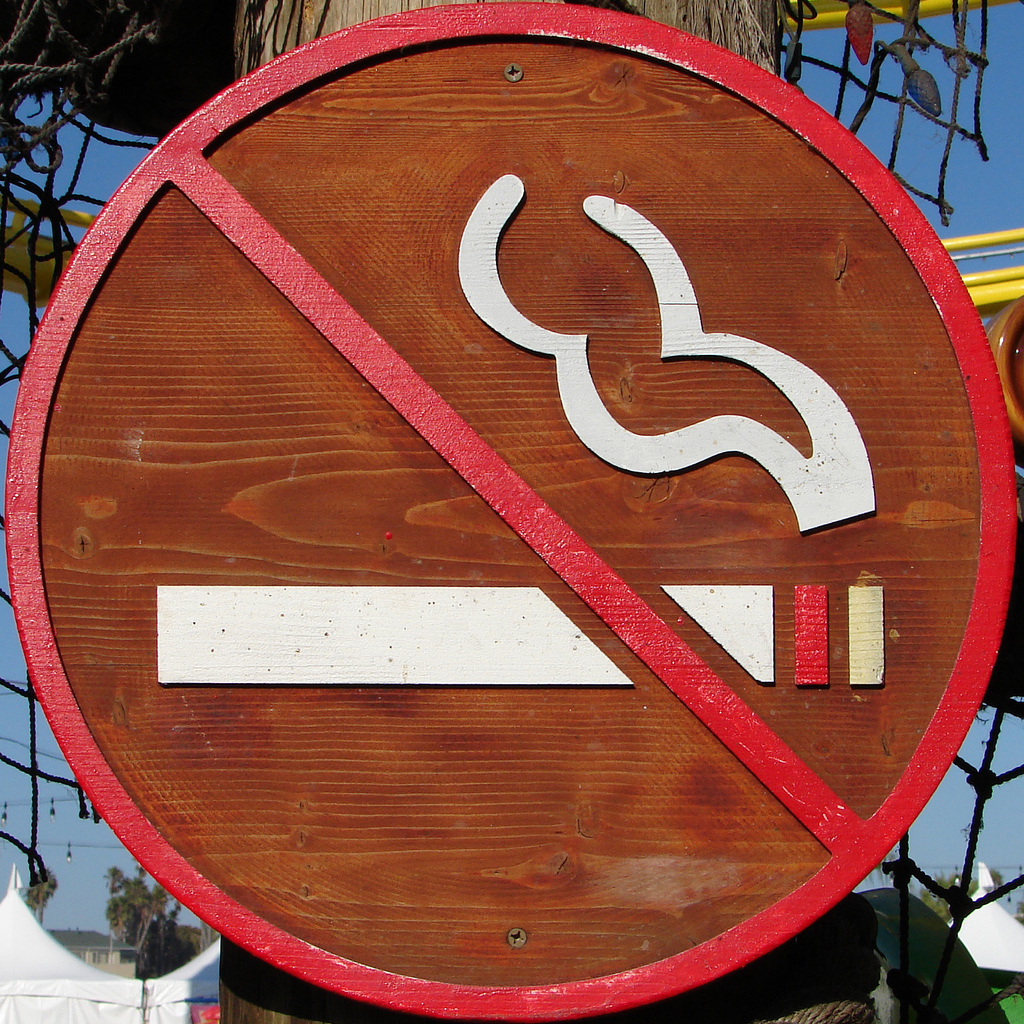All around campus, sky-blue “Breathe Freely” signs endorse the University of Miami’s smoke-free policy, but despite these efforts to stop tobacco use, clouds of gray smoke still contaminate UM’s air.
Student Government is trying to address this issue through its first “BeSmokeFree Week” on March 16-20, a four-day event designed to raise awareness about the campus policy and encourage smokers to take advantage of free smoking-cessation resources.
“So far the week has gone well,” said Ashley Falcon, assistant director of wellness in the Department of Wellness and Recreation. “We’ve had a lot of students participate in one way or another each day.”
Throughout the week, events such as a cigarette butt cleanup on Thursday and a trivia night and information session at Friday’s Canes After Dark will take place.
The Smoke-Free Campus Initiative began in 2011 when the university created designated smoking areas. It was comprised of three phases, going from designated areas to eliminating half the smoking areas to removing the areas altogether.
On Aug. 1, 2013, President Donna E. Shalala sent a letter implementing the final step in the process – a campus that is 100 percent smoke-free.
Students like Brianna Hathaway, SG president-elect, believe it is necessary to promote resources to help people stop smoking.
“I think the ban is important because when the climate survey was originally taken years ago, the majority of students wanted to transition to a smoke-free campus to provide a healthier environment for all students,” she said.
As part of the campus initiative, the Office of Community Health Affairs Area Health Education Center sponsored the BeSmokeFree program to be a resource for everyone on campus. The Wellness Center and the Medical Wellness Center offer classes to help tobacco addicts kick their smoking habit.
Despite the resources and bright reminders on lampposts and walls, it is not uncommon to find a handful of cigarette butts flattened in front of Richter Library.
Students even organized a sit-in protest in 2013 when the university first got rid of smoking areas. A group of students sat on the Rock, smoking, holding posters and signing a petition against the ban.
UM alumnus Micah Nellessen was one of the organizers of the event even though he is not a smoker.
“We just want to go back to the old system,” Nellessen said. “That way we can keep the smoke contained to certain areas, and if someone doesn’t like the smoke, they can avoid those areas. A lot of us are non-smokers, and we are not condoning smoking. But it’s our right to choose.”
For some international students, a language barrier could cause misunderstanding. Zihan Wang, a student from China, said he did not understand the policy at first.
“When I first got on-campus, when I looked at the sign saying ‘Smoke-Free Campus,’ I thought it meant everyone can smoke freely on campus,” said Wang, a sophomore finance major.
The prohibition of smoking extends to carrying a lighted tobacco product and even electronic cigarettes. The policy also encourages “smoke-free ambassadors” to approach smokers and advise them to abide by the rules.
UM is just one of many Florida colleges to implement smoke-free policies, with help from Tobacco Free Florida, a media campaign funded by the state and supported by legislation that warns of the dangers of tobacco use. According to Tobacco Free Florida statistics, the largest group of smokers is those aged between 18-24.
Featured photo courtesy Gareth Simpson via Flickr.






